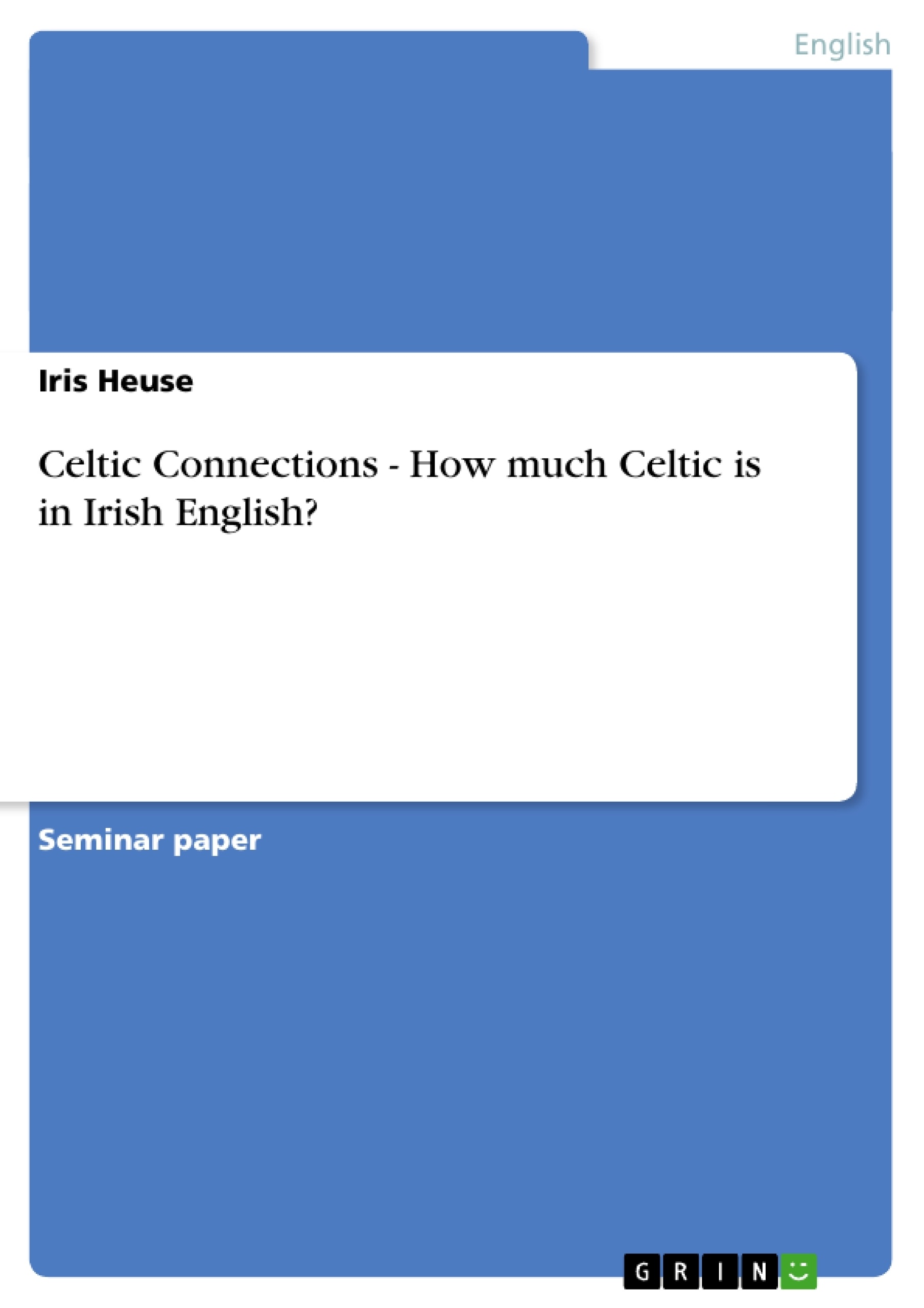Wenn man lange miteinander lebt, ist es nicht verwunderlich, dass Eigenschaften des einen auf den anderen abfärben. Bei Sprachen ist dies nicht anders. Wenn zwei Sprachen lange Zeit nebeneinander existieren, liegt es nahe, dass sie sich gegenseitig beeinflussen. Dies kann auf unterschiedliche Art und Weise geschehen und mit unterschiedlicher Intensität erfolgen. Für den Wissenschaftler bleibt nun die Frage, welche Eigenschaften einer Sprache kontaktbedingt sind, und welche nicht. Ein viel debattiertes Beispiel für Sprachkontakt ist das des Englischen und Irischen. Die Frage wie weit das Irische das Englische in Irland beeinflusst hat, findet viele Antworten, je nachdem wen man fragt, und es ist nicht einfach für den objektiven Wissenschaftler eine klare Antwort zu finden.
Inhaltsverzeichnis (Table of Contents)
- The history of Irish and English in Ireland
- What is language contact?
- Features of Irish English and their relationship with the Irish Language
- Yes/No questions
- Indirect questions
- After-Perfect
- Other perfects
- The definite article
- Periphrastic do
- Subordinating and
- Prepositions
- Clefting and topicalisation
- Conclusion
Zielsetzung und Themenschwerpunkte (Objectives and Key Themes)
This seminar paper aims to explore the influence of the Irish language on Irish English. By analyzing the history of language contact in Ireland and examining specific features of Irish English, the paper investigates the extent to which Celtic elements have shaped the development of this variety of English.
- The historical relationship between Irish and English in Ireland
- The concept of language contact and its effects on languages
- The impact of Irish language features on Irish English
- The role of social and linguistic factors in language change
- The significance of Irish English as a variety of English influenced by Celtic heritage
Zusammenfassung der Kapitel (Chapter Summaries)
- The first chapter delves into the historical context of Irish and English in Ireland, tracing their coexistence from the arrival of the Anglo-Normans in the 12th century to the emergence of English as the dominant language in the 19th century. It examines the impact of English settlement and the shift in language use among the Irish population, highlighting the symbolic significance of the Irish language as a marker of national identity.
- The second chapter introduces the concept of language contact, defining it as the simultaneous use of multiple languages in a specific location. It explores the factors that contribute to language contact, including social pressures, linguistic influences, and the role of bilingualism. The chapter also examines how language contact can lead to language shift and explores the specific case of Irish, where the language has shifted from dominance to minority status while retaining a significant cultural importance.
- The third chapter focuses on the features of Irish English and their relationship to the Irish language. It investigates how elements of Irish grammar and syntax have influenced the structure and usage of Irish English. This chapter specifically examines the area of yes-no questions, where the absence of equivalents for "yes" and "no" in Irish has led to distinct patterns of responding in Irish English.
Schlüsselwörter (Keywords)
The key concepts explored in this paper include language contact, Irish English, language shift, substratum interference, bilingualism, and the historical relationship between Irish and English in Ireland. The paper examines the impact of Irish language features on the development of Irish English, highlighting specific examples such as the use of verb repetition in responses to yes-no questions.
- Citar trabajo
- Iris Heuse (Autor), 2007, Celtic Connections - How much Celtic is in Irish English?, Múnich, GRIN Verlag, https://www.grin.com/document/73540



